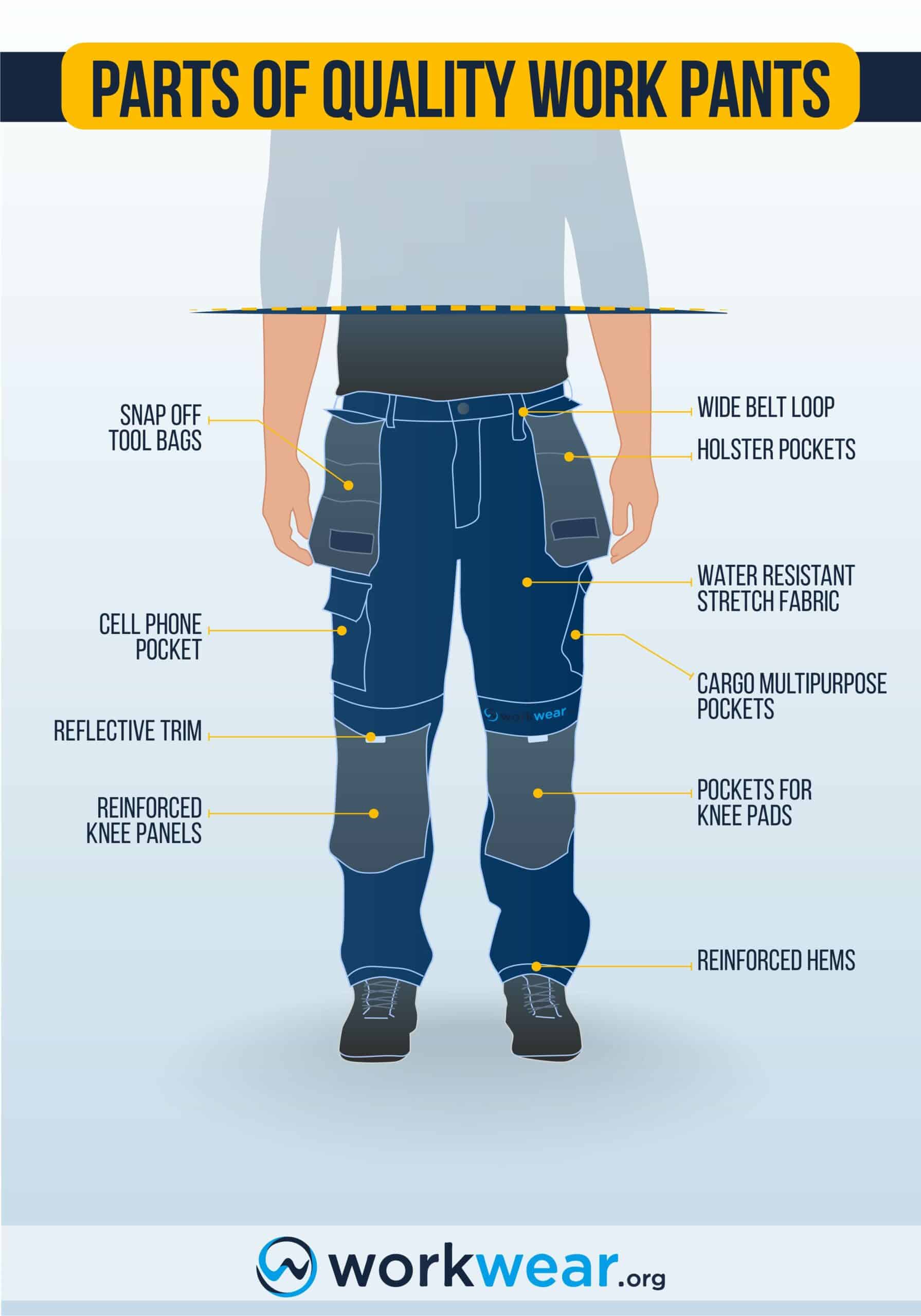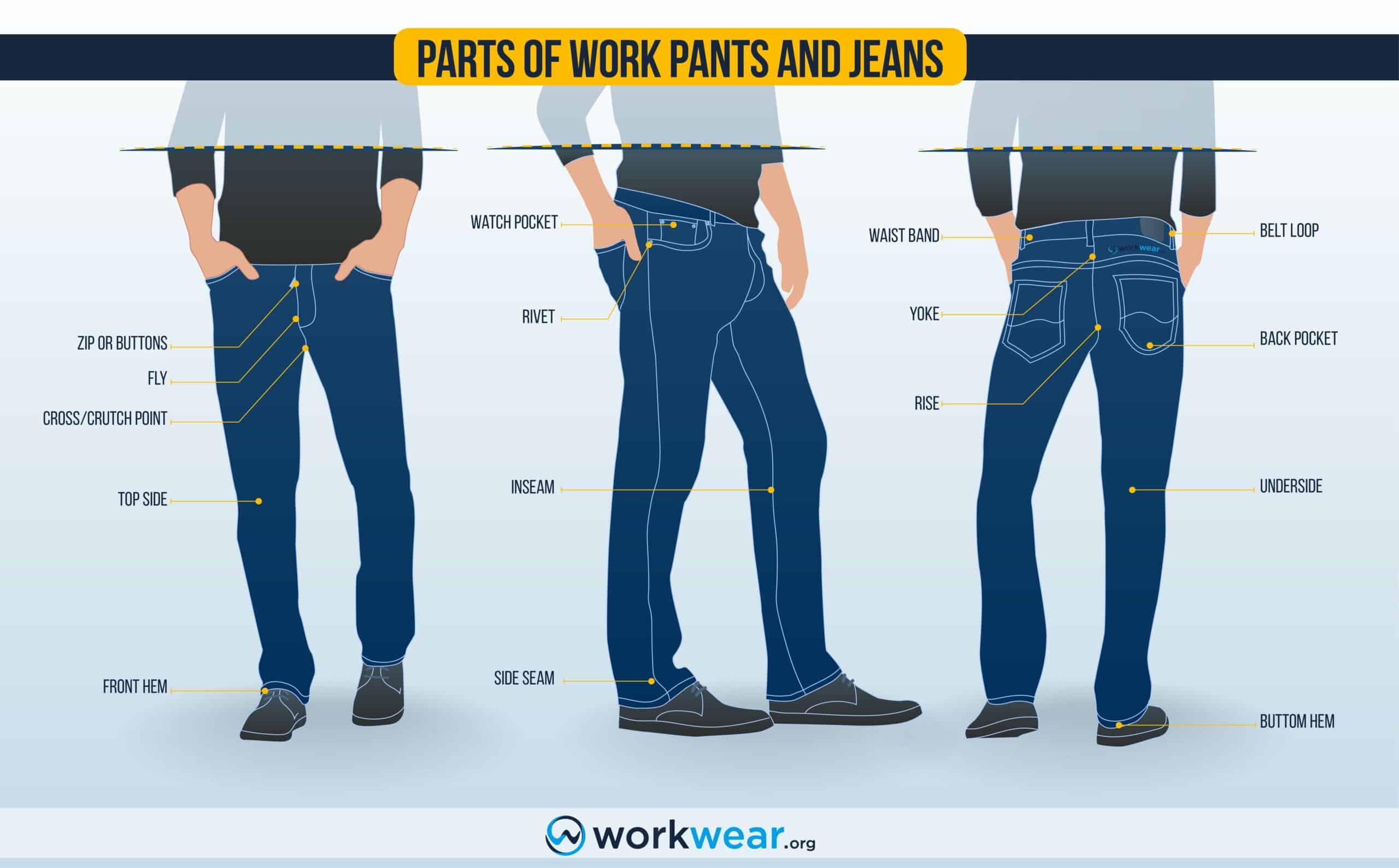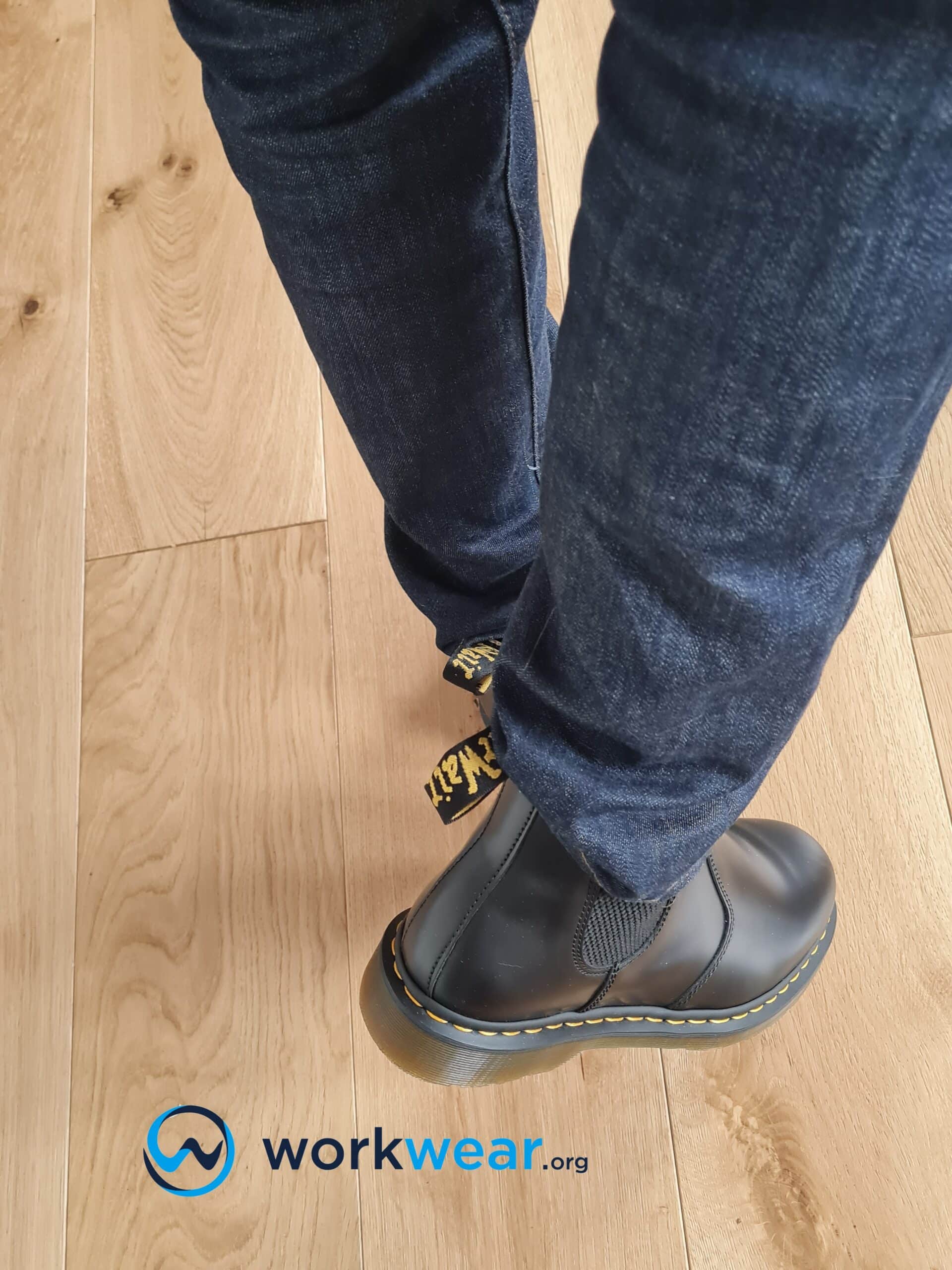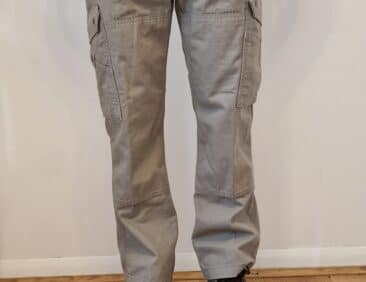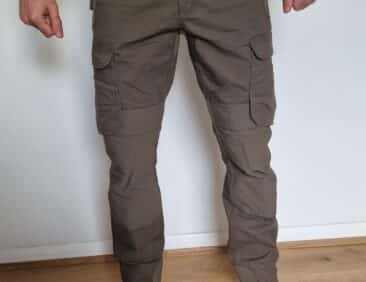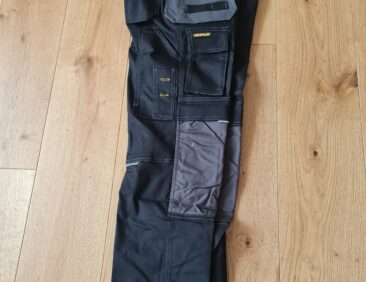Work pants vs. jeans – Comparison
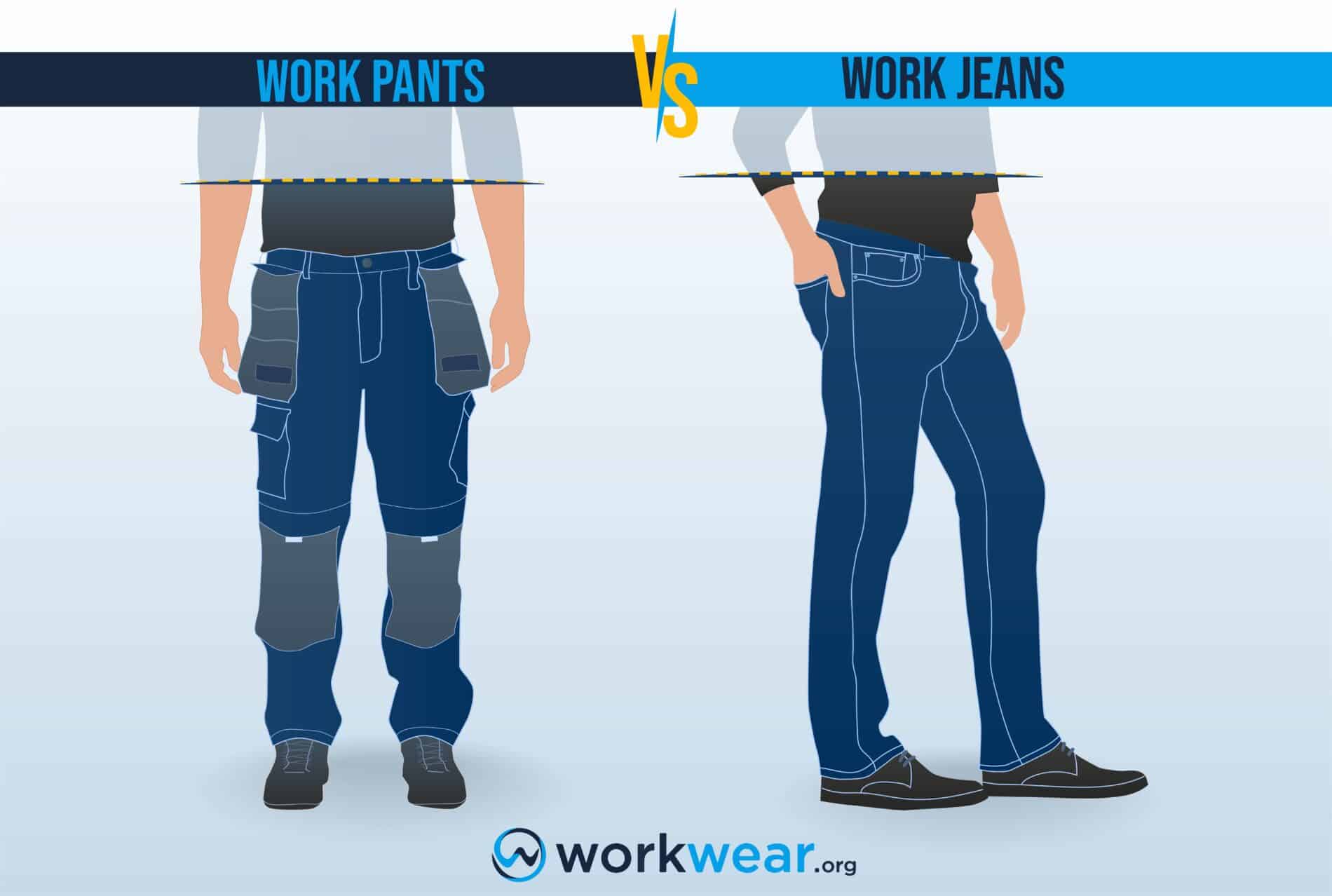
When it comes to making a fashion statement and deciding what clothing to wear, the debate between work pants and jeans is an age-old one. On the one hand, some prefer the comfort, versatility, and style of jeans for casual and formal occasions. While on the other hand, some think that work pants offer more structure and a more polished look and are better suited for certain environments. In this article, we will take a deeper look into the differences between work pants and jeans to make an informed decision about what to wear for any occasion.
What are work pants?
Work pants are trousers designed to provide maximum durability, protection, and comfort. They are typically made from heavy-duty fabrics such as denim or canvas and feature multiple pockets for tools and accessories. In addition, reinforced knee panels provide extra support and protection against scrapes or injuries. Some work pants also feature pockets that fit knee pads, providing additional protection. Work pants are often best suited for professions that require strenuous activities, such as manual labor or outdoor work.
When choosing between work pants and jeans, it is important to consider factors such as fabric, multiple pockets, reinforced knee panels, and style and fit of each type of garment to ensure the most appropriate choice for your workplace before deciding which garment is right for you.
Is there any difference between work pants and jeans?
One of the biggest differences between work pants and jeans is the fabric they are made from. Work pants are made from a heavier and thicker cotton twill fabric, while jeans are usually made from a lighter cotton-polyester blend. Additionally, work pants tend to have multiple pockets and reinforced knee panels for durability and consist of features such as a wide belt loop, holster pocket, multipurpose cargo pockets, reinforced hem, and cell phone pocket. Jeans may also feature multiple pockets but don’t normally come with reinforced knee panels or pockets for knee pads. Another difference is that jeans are typically more casual in appearance than work pants, making them better suited for informal occasions. Work pants are also usually made with a straight-leg cut and feature buttons or zippers for closure. On the other hand, jeans come in multiple styles and have a more relaxed fit.
To summarize, work pants tend to be heavier fabric, with multiple pockets, reinforced knee panels, and features such as buttons or zippers. They are solely for rigorous workers such as technicians, engineers, car mechanics, and builders. On the other hand, jeans are ideal for casual occasions or everyday wear. Both types of pants offer different looks and benefits, so it’s important to consider which works best for each occasion.
What style of work pants should I buy?
There are many different styles of work pants available, so it’s important to consider what type would best suit your needs. Look for trousers that have multiple pockets and reinforced knee panels for durability. If you need something more formal, wear trousers with buttons or zippers for closure. Choose from solid colors such as khaki or navy blue, or opt for a patterned fabric for something more striking. Finally, consider the fit and style of the trousers to ensure you buy something that will flatter your body type and suit your lifestyle. With so many options available, there is sure to be a pair of work pants that will meet all of your needs.
Which jobs are work pants good for?
Work pants are ideal for work in a variety of industries. They provide a professional look while still being comfortable and durable, making them perfect for jobs that require a lot of movement. Work pants are great for office workers, factory workers, mechanics, construction workers, and many other professions. They can also be dressed up or down, depending on the occasion. With multiple pockets, reinforced knee panels, and buttons or zippers for closure, work pants are a great choice for those who need comfortable and stylish job attire.
Are jeans good for work?
It depends on the type of job and the dress code. Jeans are typically more casual in appearance than work pants, making them better suited for informal occasions. That said, multiple styles of jeans can be dressed up with a blazer or dress shirt to make them suitable for some professional settings. It is important to consider your workplace’s dress code and the style and fit of the jeans you choose before deciding if they are appropriate for work. With so many options available, there is sure to be a pair of jeans that will meet all of your needs.
What jobs are jeans good for?
Jeans are ideal for casual occasions or everyday wear. They feature multiple pockets and a more relaxed fit than work pants, making them comfortable to wear during activities such as walking, running, or bike riding. Jeans can also be worn with blazers for formal occasions. Depending on the job, jeans may be suitable attire for various professions, including office workers, factory workers, and construction workers. It is important to consider the dress code of your workplace before deciding on whether or not jeans are appropriate attire. With multiple styles and fits available, there is sure to be a pair of jeans that will suit your needs.
Pros and Cons of work pants vs. jeans
| Pants Type |
Pros |
Cons |
|---|---|---|
| Work Pants |
|
|
| Jeans |
|
|
Conclusion
In conclusion, work pants and jeans are two completely different attires for different purposes and individuals. Both offer advantages and disadvantages that must be weighed when considering which garment to wear. Work pants provide more structure and are a good fit for work environments. At the same time, jeans offer a more relaxed style with multiple fits and styles available. They are comfortable and versatile enough to be worn in multiple settings, making them perfect for everyday wear or casual occasions. Ultimately, the best choice between work pants and jeans will depend on your lifestyle and job type. It is important to consider your workplace’s dress code before deciding which garment is right for you.
FAQs
- What are the best ways to clean my work pants?
- It is best to check the care instructions before cleaning your work pants. Generally, it is recommended to machine wash cold with like colors and tumble dry low. Additionally, you should avoid using bleach or fabric softeners on your work pants as they can damage the fabric. For more delicate fabrics, such as wool or cashmere, it is best to dry clean or hand wash in cold water.
- What fabric is best for work pants?
- The best fabric for work pants depends on the type of job and environment you will be working in. Generally, durable fabrics such as cotton, nylon, or polyester are good choices for work wear. For more hazardous environments, waterproof and breathable fabrics such as Gore-Tex or Corduroy can provide additional protection. Additionally, it is important to consider the climate and weather conditions you will be working in, as some fabrics may need to be more suitable for extreme temperatures or conditions.
- Are work pants and carpenter jeans the same thing?
- No, work pants and carpenter jeans are different. Although both are used for workers in hazardous working environments, carpenter jeans have multiple features designed to make them suitable for carpentry tasks, such as multiple tool pockets, hammer loops, and reinforced back pockets. As such, they are more suited for manual labor than professional settings. At the same time, work pants are used by office workers, factory workers, mechanics, construction workers, and many other professions.
- Can normal jeans be worn in hazardous work environments?
- No, jeans do not typically provide the same level of protection as work pants in hazardous working environments. Their more structured fit and professional look are better suited for safety-conscious workplaces.
- What are some of the best brands that offer work pants?
- Some of the best brands that offer work pants include Dickies, Carhartt, Red Kap, and Berne. These brands provide multiple styles and fit to suit different needs and budgets. Additionally, they are all well-known for their durable fabrics and reinforced features, making them suitable for working environments.
- How can I wash stains from my work pants?
- It is best to check the care instructions before removing stains from your work pants. Generally, it is recommended to pre-treat stains with a stain remover or spot cleaner, and then machine washes cold with like colors and tumbles dry low. Additionally, you should avoid using bleach or fabric softeners on your work pants as these can damage the fabric. For more delicate fabrics, such as wool or cashmere, it is best to dry clean or hand wash in cold water. It is also important to consider the type of stain before attempting to remove it from your work pants. Some stains may require multiple treatments or special cleaning solutions to remove them successfully.
- Can work pants be worn in hot weather/workplace?
- Yes, work pants can be worn in hot weather. It is important to select a breathable and lightweight fabric, such as cotton or linen, to ensure comfort when working in warm temperatures. Additionally, some brands offer special cooling technologies allowing maximum airflow and temperature regulation. Furthermore, it is also important to dress appropriately.
